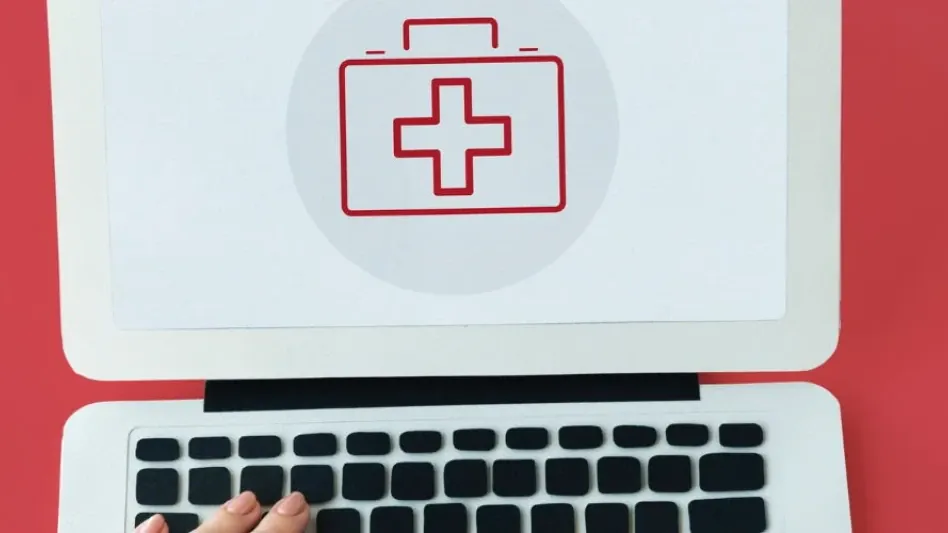The healthcare industry has always prioritized patient care, but the rise in cyberattacks underscores the burgeoning need for robust data security measures. Healthcare organizations store vast amounts of sensitive data, making them prime targets for cybercriminals. Understanding and addressing common vulnerabilities is crucial to safeguarding patient information and maintaining trust.
Healthcare facilities face a unique challenge: they must balance the urgent need for accessible patient data with stringent security requirements. This delicate balancing act often leaves gaps in data security, which can lead to severe consequences if exploited. The complexity of maintaining security across various systems further complicates this landscape, necessitating an in-depth examination of common vulnerabilities.
Securing Disparate Data Storage Systems
Hospitals often use a mix of digital storage, physical files, cloud services, and third-party storage solutions. This diversity can make data oversight challenging, creating opportunities for cybercriminals to infiltrate unnoticed. Without comprehensive oversight, it’s nearly impossible to maintain a unified security posture. Data silos, resulting from fragmented storage solutions, significantly exacerbate the risk.
To address this issue, healthcare organizations should prioritize eliminating data silos. By consolidating data storage into as few systems as possible and implementing an overarching cybersecurity framework, they can better protect their critical information assets. This includes not only securing data at rest but also protecting it during transit. Consolidating data storage allows for more effective monitoring and management of data security measures, reducing the chances of breaches going undetected.
In addition to consolidation, regular audits and stringent access controls are critical in maintaining the integrity of a unified system. Continuous monitoring enables quick detection and response to unauthorized access attempts or other security anomalies. By streamlining data storage and enhancing security protocols, healthcare institutions can significantly mitigate the risks associated with disparate data systems.
Enabling Lateral Movement With Interconnected Systems
Interconnected systems in healthcare are essential for efficient operations but also create pathways that can be exploited by attackers. Lateral movement within these systems allows cybercriminals to access sensitive data through less secure points, propagating the threat throughout the network. This interconnectedness is indispensable for daily operations but poses a substantial security challenge.
Mitigating this risk involves implementing strict access controls and authentication measures. By restricting user access to only the data necessary for their role, healthcare institutions can limit the potential damage of a breach. This principle, known as the policy of least privilege, is fundamental in protecting interconnected systems. It ensures that even if one part of the system is compromised, the attacker cannot easily access the entirety of the network.
Additionally, continuous monitoring for unusual activity can help identify and contain threats before they spread. Implementing comprehensive cybersecurity training for all employees can further reduce the likelihood of human errors that might compromise interconnected systems. Educating staff on recognizing phishing attempts and other common attack vectors is vital in building a resilient defense.
Revisiting Data Sources: AI Vulnerabilities
The integration of artificial intelligence (AI) in healthcare has revolutionized patient care and operational efficiency. However, AI systems also introduce new vulnerabilities, such as susceptibility to prompt injection attacks. These attacks can manipulate AI models into revealing protected data, posing significant security risks. As AI becomes increasingly embedded in healthcare, the potential attack surface expands.
Continuous evaluation and updates of AI algorithms are essential to counteract emerging threats. This is particularly important for patient-facing applications where data integrity and security are paramount. Healthcare organizations must adopt best practices for AI security, including regular audits, using robust encryption methods, and fostering a culture of continuous improvement in AI technologies.
In addition to technical measures, a comprehensive approach to AI security should involve collaboration among different teams within the organization. By fostering an environment where cybersecurity experts work closely with AI developers, healthcare institutions can ensure that new risks are swiftly identified and mitigated. This collaborative effort is crucial in maintaining the security and effectiveness of AI systems.
Third-Party Vendors’ Roles in Data Security
Healthcare organizations frequently rely on third-party vendors for various services, including data storage, processing, and administration. However, these partnerships can introduce additional security risks, as vendors also handle sensitive patient data. The growing reliance on third-party services necessitates stringent security protocols to safeguard data integrity and confidentiality.
To reduce these risks, it’s crucial to implement fully homomorphic encryption. This technology allows third parties to perform operations on encrypted data without needing to decrypt it first, ensuring that sensitive information remains protected even during processing. Establishing strict security protocols and regular audits for third-party vendors can further safeguard against potential breaches. Clear communication and comprehensive contracts outlining security expectations and responsibilities are essential in managing third-party relationships.
By doing so, healthcare organizations can ensure that their data security measures are maintained across all entities handling patient information. Regular assessments and updates to vendor security practices are necessary to adapt to the evolving threat landscape, ensuring that third-party partnerships do not become weak links in the data security chain.
Medical Wearable and Implantable Threats
The proliferation of medical wearables and implantables has greatly improved patient monitoring and care. However, these devices, which constantly connect to the internet, pose significant security threats. Data transmitted between these devices and remote servers can be intercepted if not properly secured, highlighting the need for robust security measures tailored to these technologies.
Encrypting data both at rest and in transit is crucial to mitigate these risks. Ensuring that devices only transmit necessary information and that this data is adequately protected through robust encryption methods can significantly reduce vulnerabilities. Regular updates and patches to device software also play a critical role in maintaining the security of medical wearables and implantables. Hospitals and healthcare providers must also educate patients about potential risks and the steps they can take to protect their own data, fostering a collaborative effort in maintaining data security. By increasing patient awareness and engagement, healthcare institutions can enhance overall security and trust in medical wearables and implantables.
Improper Disposal of Outdated Data
Many healthcare facilities struggle with the proper disposal of outdated data, leaving residual information that can be exploited. Simply deleting files is not enough; comprehensive destruction protocols are necessary to ensure that data cannot be recovered. This often-overlooked aspect of data security can pose significant risks if not addressed adequately.
Adhering to guidelines set by the U.S. National Institute of Standards and Technology (NIST) for media sanitization is essential. This includes thorough methods for erasing data from storage devices and ensuring physical destruction when necessary. Establishing clear policies and training staff to follow these protocols can prevent unauthorized access to residual data. Implementing a regular review process to identify and appropriately dispose of outdated data can further strengthen data security. By making data disposal a priority, healthcare organizations can minimize risks and ensure compliance with data protection standards.
In addition to following NIST guidelines, healthcare institutions should consider leveraging technology for secure data disposal. Specialized software designed for data destruction can provide an additional layer of security, ensuring that outdated data is irretrievably erased. Combining physical destruction methods with advanced software solutions can offer comprehensive protection against potential data breaches from outdated information.
Cybersecurity and Data Security Integration
There is a common misconception that cybersecurity and data security are separate domains. In reality, they are deeply intertwined, and addressing one often involves considering the other. Strengthening data security in healthcare requires integrating cybersecurity measures into broader data protection strategies to create a cohesive defense mechanism.
Reinforcing network security, computer systems, and infrastructure naturally protects datasets. Implementing authentication, network monitoring tools, and automated incident response systems is crucial for effective data protection. By adopting a holistic approach, healthcare organizations can ensure that both cybersecurity and data security measures work in tandem to safeguard sensitive information.
Integrating cybersecurity training into routine operations also plays a significant role in enhancing data security. Employees should be well-versed in recognizing potential threats and responding appropriately to minimize risk. This continuous education fosters a security-conscious culture within the organization, further bolstering the integration of cybersecurity and data security.
Merging Legacy and Modern Storage Systems
Many hospitals use a mix of outdated and modern technologies, which complicates data security due to differences in operating systems and compatibilities. Merging legacy systems with modern technologies often introduces vulnerabilities that can be exploited by attackers. Managing these integrations effectively is crucial to maintaining a robust security posture.
It’s vital to prioritize technology updates, minimize integrations, and optimize interconnectivity to reduce exploitable weak spots. Regular assessments of both legacy and modern systems are essential to identify potential vulnerabilities and implement necessary updates. By minimizing the complexity of these integrations, healthcare organizations can reduce the risk of security breaches.
In addition to technology updates, healthcare institutions should establish clear protocols for handling legacy systems. This includes defining specific roles and responsibilities for managing these systems and ensuring that security measures are consistently applied. Combining strategic priorities with practical steps can significantly enhance the security of both legacy and modern storage systems.
Overall, bridging the identified data security gaps in healthcare requires a multifaceted approach that considers technological, procedural, and human factors. By adopting comprehensive and proactive measures, healthcare institutions can significantly reduce their vulnerability to data breaches and enhance their overall security posture.









